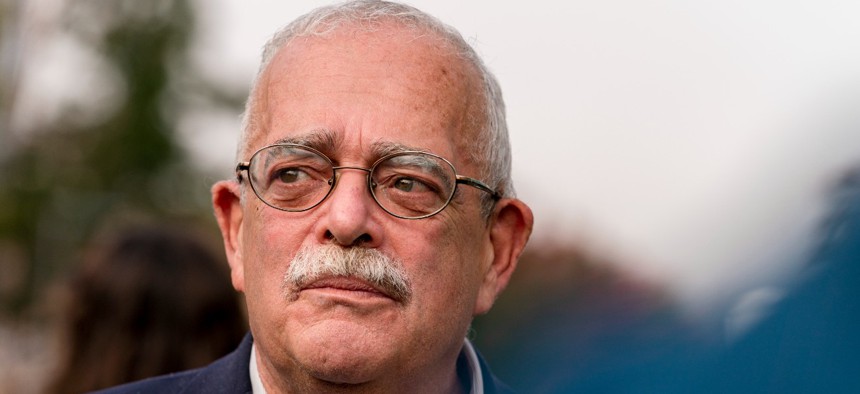
Rep. Gerry Connolly, D-Va., urged the appropriations committee to include language stipulating an average 3.2% pay increase for civilian federal employees. Jacquelyn Martin / AP
Some Dems Continue to Push for Bigger Pay Raise for Feds, and More
A weekly roundup of pay and benefits news.
The House Appropriations Committee on Tuesday advanced a spending bill that endorses President Biden’s proposal to give civilian federal employees an average 2.7% pay raise in 2022, despite efforts by some Democrats to provide a bigger increase.
The House’s fiscal 2022 Financial Services and General Government appropriations bill includes no provisions on federal employee pay, effectively endorsing Biden’s pay raise plan, which was included as part of his budget request. It is unclear how the 2.7% would be split between across-the-board increases to basic pay and the average increase in locality pay, although historically, 0.5% has been set aside for locality pay.
But on Monday, a group of 19 Democrats, led by Rep. Gerry Connolly, D-Va., urged the appropriations committee to include language stipulating an average 3.2% pay increase for civilian federal employees, to be split between a 2.2% across-the-board increase and a 1.0% average increase in locality pay.
“Unfortunately, the federal government has a history of chronic underinvestment in its most valuable asset—the federal workforce,” they wrote. “In recent years federal employees have been subject to multiple pay freezes, hiring freezes and lost pay as a result of sequestration-related furloughs. In nine of the last 10 years, federal employee pay increases have not kept pace with the statutory formula for determining annual salary adjustments.”
The lawmakers argued that a more generous pay increase will be necessary as the federal government tries to attract the next generation of federal employees, noting that feds make on average 23.1% less than their private sector counterparts, according to the Federal Salary Council.
“Currently, only 7% of the federal workforce is under the age of 30 while the civilian labor force enjoys nearly three times that number,” they wrote. “With almost a third of the federal workforce eligible to retire in five years, we will face a talent crisis if we fail to make basic investments in the human capital of the federal government.”
But thus far, the lawmakers have been unsuccessful in convincing their colleagues. On Tuesday, the appropriations committee advanced the spending bill to the floor without any changes to incorporate a bigger pay raise.
More Vaccine Incentives
The federal government’s second largest health insurer on Tuesday became the second carrier to offer financial incentives to federal workers to get the COVID-19 vaccine.
The Government Employees Health Association announced that beginning July 1, Federal Employee Health Benefits Program enrollees in the insurance carrier’s plans can receive a $75 credit on qualified medical expenses if they provide proof that they have been vaccinated.
In order to be eligible for the credit, a federal employee must be enrolled in a GEHA health plan, 18 years old, and they must not have reached their annual wellness program reward limit. They also must receive their first COVID-19 vaccine shot by July 31, although they have until Dec. 31 to provide proof that they are fully vaccinated. Those who have been vaccinated prior to July 1 are also eligible for the $75 credit.
“As the second largest medical benefit provider of federal employees, GEHA is committed to helping safeguard the health and safety of the U.S. federal workforce, and combating COVID-19 has been at the top of the priority list for more than a year,” said Interim President and CEO Rich Bierman in a statement. “Federal workers are the backbone of our nation's infrastructure, and our vaccination incentive program is designed to support them and their families during this critical time.”







